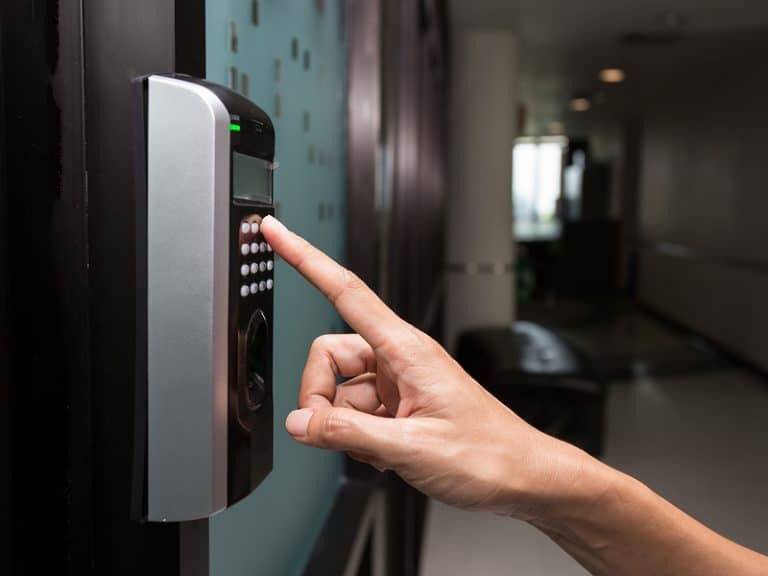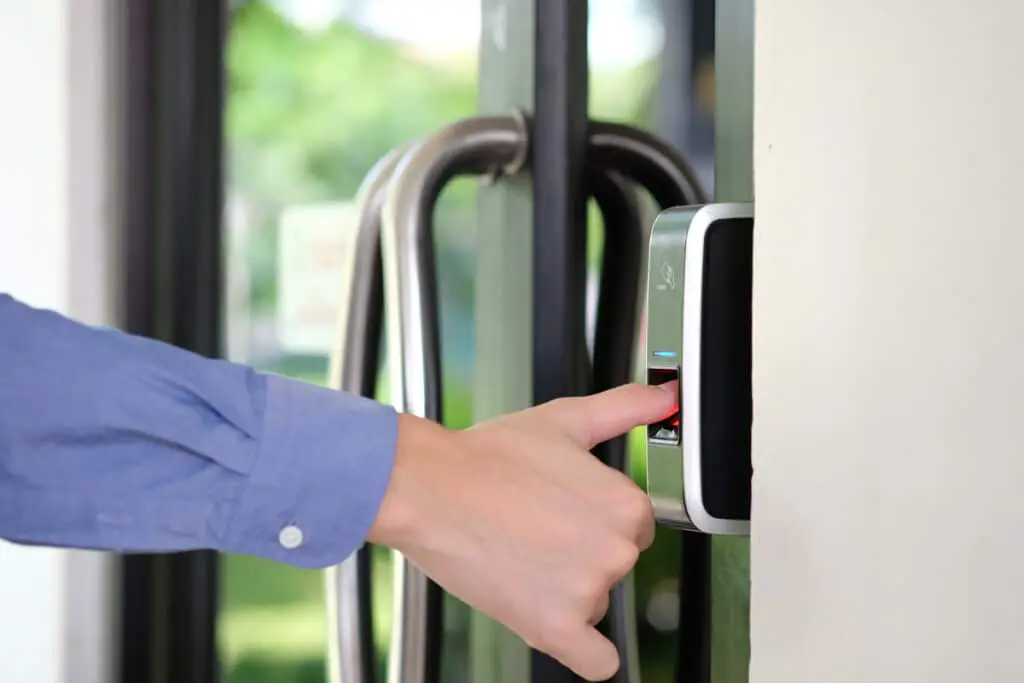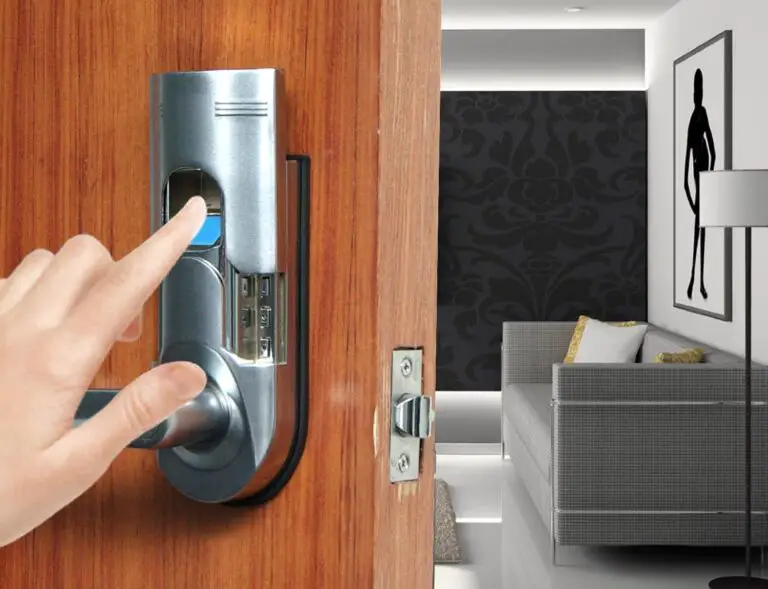Introduction
What Is A Biometric Lock: A biometric lock is a type of security device that uses unique physical or behavioral characteristics to grant access. Unlike traditional locks that require keys or codes, biometric locks rely on individual traits such as fingerprints, iris patterns, or facial recognition to authenticate users. These locks have gained popularity in recent years due to their high level of security and convenience.
One of the main advantages of biometric locks is their ability to provide a high level of security. Since biometric traits are unique to each individual, it is nearly impossible for someone to replicate or forge them. This makes biometric locks highly resistant to unauthorized access and reduces the risk of break-ins or theft.
Another benefit of biometric locks is their convenience. With a biometric lock, there is no need to carry around keys or remember complex codes. Users work permit simply need to present their biometric trait, such as a fingerprint or face, to gain access.

What is the meaning of biometric lock?
A biometric lock is a type of lock that uses unique physical or behavioral characteristics to grant access. It is a security device that relies on biometric technology, which involves the measurement and analysis of biological data. By using biometric technology, these locks can ensure that only authorized individuals are able to gain access.
One of the key advantages of biometric locks is their convenience. Unlike traditional locks that require keys or codes, biometric locks only require the physical presence of the authorized individual. In addition to providing enhanced security, biometric locks can also help to streamline access control processes and improve overall efficiency.
A biometric lock is a security device that uses unique physical or behavioral characteristics to grant access. It offers a higher level of security compared to traditional locks and provides convenience by eliminating the need for keys or codes.
What is biometric lock in Aadhaar?
A biometric lock in Aadhaar secures data access with biometric authentication. Indians receive a unique identity number called Aadhaar, which contains demographic and biometric data. Individuals can lock their biometric data in the Aadhaar database to prevent unauthorized access.
Biometric authentication verifies identity using distinctive physical or behavioral traits like fingerprints, iris patterns, or face features. Aadhaar enrollment involves fingerprints and iris scans, which are linked to the individual’s number. The Unique Identification Authority of India stores biometric data in a secure database.
Protection of biometric data is enhanced by the biometric lock feature. The biometric lock encrypts and locks the individual’s biometric data in the Aadhaar database. If someone acquires unauthorized access to the database, they cannot use biometric data for authentication.
Enabling the biometric lock online or via the Aadhaar app is easy. This provides users control over who can use their biometric data and when.
The biometric lock function in Aadhaar protects biometric data. It prevents identity theft and biometric data exploitation by giving people control over their data.
How safe are biometric locks?
Biometric locks have gained popularity in recent years as a more secure alternative to traditional locks. These locks use unique physical characteristics, such as fingerprints or iris patterns, to grant access to a space. While biometric locks offer a high level of security, it is important to consider their safety and potential vulnerabilities.
Biometric locks’ false positives and negatives are major concerns. False positives and negatives occur when the lock misidentifies an authorized user or fails to recognize one. These inaccuracies might be caused by dirty or defective sensors, injury or aging-related bodily changes, or faulty enrolling processes. However, biometric technology has greatly reduced false positives and negatives, making these locks more dependable.
Another safety concern with biometric locks is the potential for hacking or spoofing. Hackers may attempt to bypass the lock’s security measures by replicating or manipulating biometric data. For example, they could create a fake fingerprint or use a high-resolution photograph of an authorized user’s face. However, modern biometric locks employ advanced encryption algorithms and anti-spoofing techniques to prevent such attacks. These locks often require live detection, meaning that they can detect whether the biometric data being presented is from a live person or a replica.
Physical vulnerabilities are also a consideration when evaluating the safety of biometric locks. For instance, someone could potentially force an authorized user to provide their biometric data under duress. Additionally, if the biometric data is stored insecurely, it could be stolen and used for unauthorized access.
Biometric locks are secure, yet they have flaws. When assessing biometric lock safety, consider false positives and negatives, hacker or spoofing attempts, and physical flaws. Recent technological advances and good implementation can greatly reduce these dangers, making biometric locks a trustworthy and secure solution for guarding precious valuables.
How to know that my Aadhaar biometric is locked or unlocked?
Follow these simple steps to check your Aadhaar biometric lock status. The Aadhaar biometric lock lets you lock and unlock your fingerprints and iris scan. This function safeguards your Aadhaar data and prevents biometric data theft.
The Unique Identification Authority of India website lets you verify your Aadhaar biometric lock status. The UIDAI website has a “”Aadhaar Services”” or “”Authentication.”” section. This area lets you verify your biometric lock status. This option requires you to input your Aadhaar number and the security code displayed on the screen.
After entering the required details, click on the “”Submit”” button. The website will then display the status of your Aadhaar biometric lock. If your biometric lock is unlocked, it means that your fingerprints and iris scan can be used for authentication purposes.
Another way to check the status of your Aadhaar biometric lock is by using the mAadhaar mobile application. The mAadhaar app is available for both Android and iOS devices and can be downloaded from the respective app stores.
Once you have logged in, you can navigate to the “”Biometric Settings”” or “”Lock/Unlock Biometrics”” section of the app. Here, you will be able to see the current status of your biometric lock.
How can I unlock my Aadhar card biometric app?
To unlock your Aadhar card biometric app, you will need to follow a few simple steps.
Step 1: Open the Aadhar card biometric app on your device. You can find the app icon on your home screen or in the app drawer. Tap on the icon to launch the app.
Step 2: On the login screen, you will see an option to reset or unlock your password. Tap on this option to proceed.
Step 3: You will be prompted to enter your registered mobile number or email address. This is the same mobile number or email address that you used during the registration process. Enter the required information and tap on the “”Next”” button.
Step 4: Once you have entered the correct mobile number or email address, you will receive a verification code. This code will be sent to your registered mobile number or email address. Enter the verification code in the designated field and tap on the “”Verify”” button.
Step 5: After successfully verifying the code, you will be prompted to create a new password. Enter a strong and secure password that you can easily remember. Make sure to follow the password requirements mentioned on the screen. Once you have entered the new password, tap on the “”Confirm”” button.
Maintaining your password and not revealing it protects your personal information.
Biometric locks employ an individual’s physical or behavioral traits to provide access. Fingerprints, iris patterns, face traits, and voice recognition are examples. A sensor in the lock turns biometric data into a digital code. To check for matches, this code is compared to the lock’s database.
To open the biometric lock, simply place your finger on the fingerprint scanner or gaze into the iris scanner. Sensors encode unique traits into digital codes. Lock disengages and grants access if code matches recorded codes. The lock stays locked without a match.
Biometric locks are secure because their authentication properties are hard to copy. No keys or access cards are needed, making them convenient. Biometric locks can give false positives or negatives depending on sensor quality and data storage.
What are the advantages of using a biometric lock?
A biometric lock offers several advantages over traditional lock systems. Firstly, it provides a high level of security as it relies on unique biological characteristics, such as fingerprints or iris patterns, which are difficult to replicate. This eliminates the risk of unauthorized access through stolen keys or passwords. Additionally, biometric locks are convenient to use as they eliminate the need for carrying keys or remembering complex passwords. Users simply need to present their biometric data, such as a fingerprint, to gain access.
Are there any limitations or drawbacks to using a biometric lock?
Biometric locks are secure and convenient, but they have downsides. One drawback is misleading acceptance or rejection. The biometric system misidentifies an unauthorized user as an authorized user or fails to recognize an authorized user. Due to injury or aging, the user’s biometric traits may alter, or biometric data may be recorded or processed differently.
The possibility to spoof or circumvent biometric locks is another problem. Biometric systems are secure, but hackers have bypassed or altered them. Gelatin or silicone can be used to mimic fingerprints for fingerprint scanners. Facial recognition systems can be fooled with a photo or mask that resembles the authorized user.
Additionally, biometric locks may not be ideal for some settings. Due to cross-contamination, fingerprint or palm scanners may not be ideal in hospitals or food processing industries. Biometric locks may not be as effective as key or card-based systems in emergencies that require speedy access.
Can a biometric lock be easily hacked or bypassed?
An individual’s fingerprints, iris patterns, or voice recognition are used to unlock a biometric lock, which provides excellent security. Biometric locks are more secure than standard locks, yet no security solution is perfect.
Hacking or bypassing a biometric lock is rare, but not impossible. Hacking and sophisticated attacks are possible with biometric locks, as with any technology. However, biometric locks are harder to hack or circumvent than standard locks, making them less appealing to intruders.
What are some common applications or industries that use biometric locks?
Biometric locks are employed in many industries and applications because of their security and simplicity. Many banks and finance companies employ biometric locks to secure vaults, safes, and cash handling rooms. Biometric locks restrict access to sensitive locations to authorized people, reducing theft and illegal access.
Healthcare employs biometric locks frequently. Biometric locks secure medical data, prescription storage, and restricted access areas like operating rooms and labs. Biometric locks ensure that only authorized workers can access sensitive patient data and crucial medical supplies, improving patient privacy and safety.
Government and law enforcement agencies also utilize biometric locks. Government entities can prevent security breaches by restricting access to these facilities with biometric locks.

Conclusion
It is a revolutionary technology that has gained popularity in recent years due to its high level of security and convenience.
One of the key advantages of biometric locks is their ability to accurately identify individuals based on their unique biometric traits. These traits can include fingerprints, iris patterns, facial features, voice patterns, and even DNA.
In addition to their high level of security, biometric locks also offer a great deal of convenience. Instead, users simply need to present their biometric traits to gain access. This not only saves time and eliminates the hassle of carrying keys, but also reduces the risk of unauthorized access. Increasingly popular in a wide range of industries.
It offers a high level of security, convenience, and versatility, making it an ideal solution for various applications. As technology continues to advance, biometric locks are likely to become even more prevalent in the future, providing enhanced security and convenience for individuals and organizations alike.

